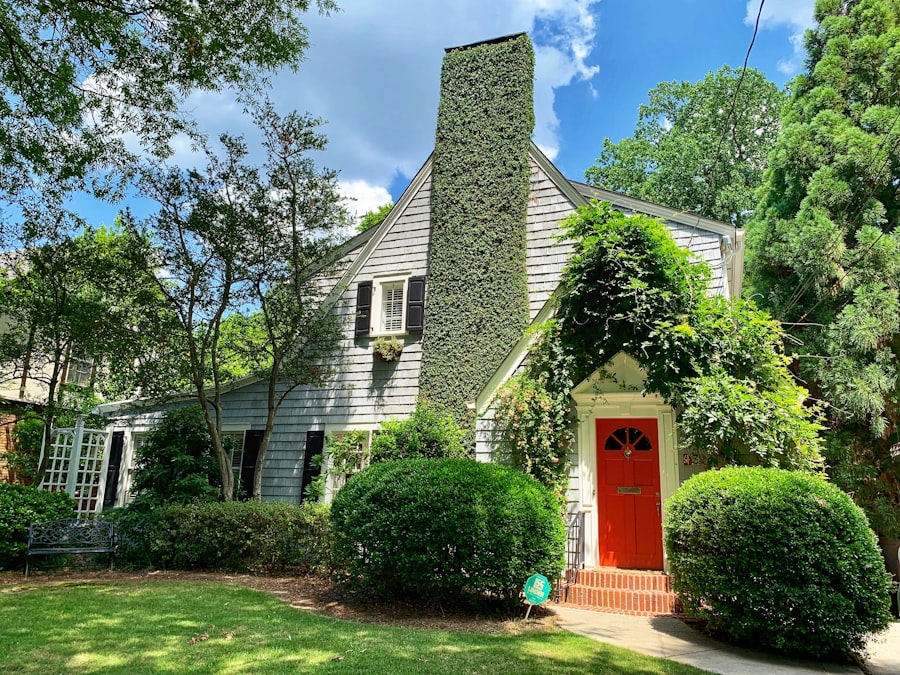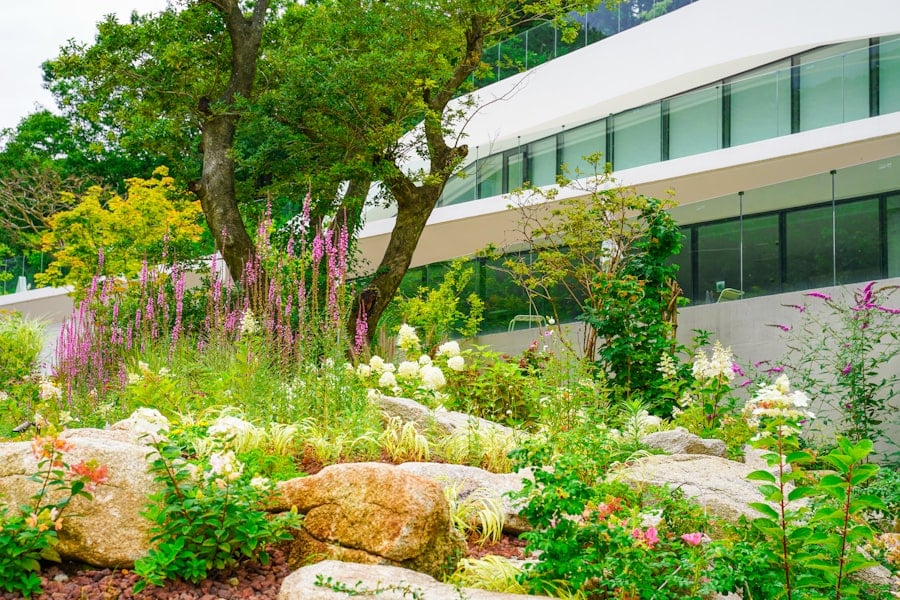When you think about landscaping, the image of lush gardens and vibrant flower beds may come to mind. However, the concept of low-maintenance landscapes is gaining traction among homeowners who desire beauty without the burden of constant upkeep. A low-maintenance landscape is designed to minimize the time, effort, and resources required for maintenance while still providing an aesthetically pleasing environment.
This approach often emphasizes the use of native plants, efficient irrigation systems, and hardscaping elements that reduce the need for regular care. You might find that a low-maintenance landscape not only saves you time but also enhances your outdoor space’s overall appeal. By selecting plants that thrive in your local climate and soil conditions, you can create a garden that requires less watering, pruning, and fertilizing.
Additionally, incorporating hardscaping features such as patios, walkways, and retaining walls can further reduce the need for ongoing maintenance. Understanding the principles behind low-maintenance landscaping can empower you to create a beautiful outdoor space that aligns with your lifestyle.
Key Takeaways
- Low-maintenance landscapes require minimal upkeep and are designed to thrive with little intervention.
- Landscaping services play a crucial role in creating and maintaining low-maintenance landscapes, from initial design to ongoing care.
- Choosing the right plants for low-maintenance landscapes is essential, focusing on native and drought-resistant species.
- Hardscaping elements such as gravel paths and stone patios can reduce the need for regular maintenance in a landscape.
- Designing irrigation systems with efficient watering techniques and smart technology can minimize the need for constant monitoring and adjustment.
The Role of Landscaping Services in Creating Low-Maintenance Landscapes
Engaging professional landscaping services can be a game-changer when it comes to establishing a low-maintenance landscape. These experts bring a wealth of knowledge and experience to the table, helping you design a space that meets your aesthetic preferences while minimizing upkeep. They can assess your property, taking into account factors such as sunlight exposure, soil type, and drainage patterns, to recommend the best plants and materials for your landscape.
Moreover, landscaping professionals can assist in planning and implementing hardscaping features that complement your garden. From selecting durable materials for pathways to designing efficient irrigation systems, their expertise ensures that your low-maintenance landscape is both functional and visually appealing. By collaborating with landscaping services, you can create a cohesive design that not only enhances your property’s value but also aligns with your desire for a hassle-free outdoor space.
Choosing the Right Plants for Low-Maintenance Landscapes

Selecting the right plants is crucial in creating a low-maintenance landscape that thrives with minimal intervention. Native plants are often the best choice, as they are adapted to your local climate and soil conditions. These plants typically require less water and are more resistant to pests and diseases, making them ideal for homeowners seeking a low-maintenance solution.
You might consider incorporating a mix of perennials, shrubs, and ornamental grasses that provide year-round interest without demanding excessive care. In addition to native plants, consider drought-tolerant species that can withstand dry spells without requiring constant watering. Succulents and ornamental grasses are excellent options that add texture and color while being resilient in various conditions.
By carefully curating your plant selection, you can create a vibrant landscape that flourishes with minimal effort on your part.
Incorporating Hardscaping for Easy Maintenance
Hardscaping plays a vital role in reducing maintenance requirements in your landscape design. By integrating elements such as patios, walkways, retaining walls, and decorative stones, you can create functional spaces that require little upkeep compared to traditional gardens. Hardscaping not only enhances the visual appeal of your outdoor area but also provides practical solutions for managing water runoff and erosion.
When planning your hardscaping features, consider using durable materials like stone or concrete that can withstand the elements without deteriorating over time. These materials require minimal maintenance and can be easily cleaned with a simple wash or occasional sealing. By strategically incorporating hardscaping into your landscape design, you can create an inviting outdoor space that allows you to enjoy your surroundings without the burden of constant care.
Designing Irrigation Systems for Low-Maintenance Landscapes
An efficient irrigation system is essential for maintaining a low-maintenance landscape while ensuring that your plants receive adequate water. Drip irrigation systems are particularly effective as they deliver water directly to the plant roots, minimizing evaporation and runoff. This targeted approach not only conserves water but also reduces the frequency of watering needed, allowing you to spend less time managing your landscape.
In addition to drip irrigation, consider installing rainwater harvesting systems to collect and utilize natural rainfall for watering your garden. This sustainable practice not only reduces your water bill but also promotes eco-friendly landscaping. By designing an efficient irrigation system tailored to your landscape’s needs, you can ensure that your plants thrive with minimal effort on your part.
Utilizing Sustainable and Eco-Friendly Practices

Incorporating sustainable practices into your low-maintenance landscape design is not only beneficial for the environment but also enhances the overall health of your garden. You might consider using organic fertilizers and pest control methods to minimize chemical usage while promoting biodiversity in your outdoor space. Additionally, implementing composting practices can enrich your soil naturally, reducing the need for synthetic amendments.
Another eco-friendly approach is to create habitats for beneficial wildlife such as pollinators and birds. By planting native flowers and providing shelter through shrubs or small trees, you can attract these creatures to your garden while reducing the need for chemical pest control. Embracing sustainable practices in your landscaping efforts allows you to create a thriving ecosystem that requires less maintenance over time.
Implementing Proper Soil and Mulch for Low-Maintenance Landscapes
The foundation of any successful low-maintenance landscape lies in its soil quality. Investing in healthy soil will not only support plant growth but also reduce the need for frequent amendments or interventions. You may want to conduct a soil test to determine its pH level and nutrient content, allowing you to make informed decisions about any necessary improvements.
Mulching is another essential practice that contributes to a low-maintenance landscape. A layer of organic mulch helps retain moisture in the soil, suppresses weeds, and gradually enriches the soil as it breaks down. By applying mulch around your plants and garden beds, you can significantly reduce the time spent on weeding and watering while promoting healthier plant growth.
Maintaining Low-Maintenance Landscapes Over Time
While low-maintenance landscapes are designed to require less care, they still need periodic attention to remain healthy and attractive. Regularly inspecting your garden for signs of pests or diseases is essential; catching issues early can prevent more significant problems down the line. You might also want to schedule seasonal tasks such as pruning or dividing perennials to keep your plants looking their best without overwhelming yourself with maintenance.
Additionally, staying on top of mulching and soil health will ensure that your landscape continues to thrive with minimal effort. By committing to these simple maintenance practices, you can enjoy a beautiful outdoor space without feeling burdened by constant upkeep.
Educating Homeowners on Low-Maintenance Landscape Care
Education plays a crucial role in ensuring homeowners understand how to care for their low-maintenance landscapes effectively. Providing resources such as workshops or informational pamphlets can empower you with knowledge about plant care, irrigation techniques, and sustainable practices. This understanding will help you make informed decisions about maintaining your landscape while minimizing unnecessary work.
Furthermore, connecting with local gardening clubs or online communities can provide valuable insights from fellow homeowners who have successfully implemented low-maintenance landscapes. Sharing experiences and tips can enhance your understanding of what works best in your specific environment, ultimately leading to a more enjoyable gardening experience.
The Cost of Creating and Maintaining Low-Maintenance Landscapes
While investing in a low-maintenance landscape may require an initial financial commitment, it often pays off in the long run through reduced upkeep costs and increased property value. The expenses associated with professional landscaping services, quality materials, and efficient irrigation systems may seem daunting at first; however, these investments can lead to significant savings over time by minimizing water usage and labor costs. Additionally, consider the long-term benefits of choosing durable materials and native plants that require less care.
By prioritizing quality over quantity in your landscaping choices, you can create an outdoor space that remains beautiful without incurring excessive costs associated with frequent replacements or repairs.
The Benefits of Low-Maintenance Landscapes for Homeowners
The advantages of low-maintenance landscapes extend beyond mere convenience; they also contribute positively to your overall quality of life. With less time spent on yard work, you have more opportunities to enjoy your outdoor space with family and friends or engage in other hobbies that bring you joy. A well-designed low-maintenance landscape allows you to appreciate nature without feeling overwhelmed by upkeep responsibilities.
Moreover, these landscapes often promote environmental sustainability by conserving water and supporting local ecosystems through native plant choices. As a homeowner, embracing low-maintenance landscaping not only enhances your property’s aesthetic appeal but also aligns with eco-friendly practices that benefit both you and the planet. Ultimately, investing in a low-maintenance landscape is an investment in a more enjoyable lifestyle—one where beauty meets practicality seamlessly.
Can Landscaping Services Create Landscapes That Are Low-maintenance? This is a common question that homeowners have when considering hiring landscaping services. One related article that addresses this topic is Frequently Asked Questions About Landscaping Services. This article provides valuable information about the different services offered by landscaping companies and how they can help create low-maintenance landscapes for homeowners. It also addresses common concerns and misconceptions about landscaping services. If you are looking for landscaping services in Nashville, Tennessee, or Fresno, California, be sure to check out Landscaping Service Nashville Davidson Tennessee and Landscaping Service Fresno California for more information on creating low-maintenance landscapes.
FAQs
What are low-maintenance landscapes?
Low-maintenance landscapes are designed to require minimal upkeep and resources, such as water and fertilizer, while still looking attractive. They often feature native plants, drought-tolerant species, and efficient irrigation systems.
Can landscaping services create low-maintenance landscapes?
Yes, professional landscaping services can design and create low-maintenance landscapes. They have the expertise to select the right plants, materials, and layout to minimize the need for ongoing maintenance.
What are some features of low-maintenance landscapes?
Low-maintenance landscapes may include features such as mulch to reduce weed growth, drip irrigation systems to conserve water, and native plants that are well-suited to the local climate and soil conditions.
How can low-maintenance landscapes save time and money?
Low-maintenance landscapes can save time and money by reducing the need for frequent watering, mowing, and fertilizing. They also require fewer resources, such as water and fertilizer, which can lead to cost savings in the long run.
Are low-maintenance landscapes environmentally friendly?
Yes, low-maintenance landscapes are often considered environmentally friendly because they require fewer resources and chemicals, such as pesticides and fertilizers, to maintain. They can also support local wildlife and promote biodiversity.
